Are you a steel mill owner in Indonesia, watching the market grow but worried about the future? You know that investing in new equipment is a big decision. You make a wrong choice on your slit coil packing line, and it becomes a massive bottleneck, crippling your ability to meet rising demand. Or worse, you over-invest in a system that is too large, and it sits idle during market lulls, draining your profits. I’ve seen this happen many times. It’s a problem that keeps good owners like you up at night. The stress comes from uncertainty. You need a solution that works for you today and grows with you tomorrow.
To future-proof your slit coil packing line in Indonesia’s growing market, you must focus on four key scalability features. These are modular design for flexible capacity, advanced automation to control long-term operational costs, seamless data integration for smart decision-making, and versatile material handling to adapt to different coil sizes and types. These features work together to create a system that is not just a piece of machinery, but a strategic asset that adapts to market changes, ensuring your investment pays off for years to come.
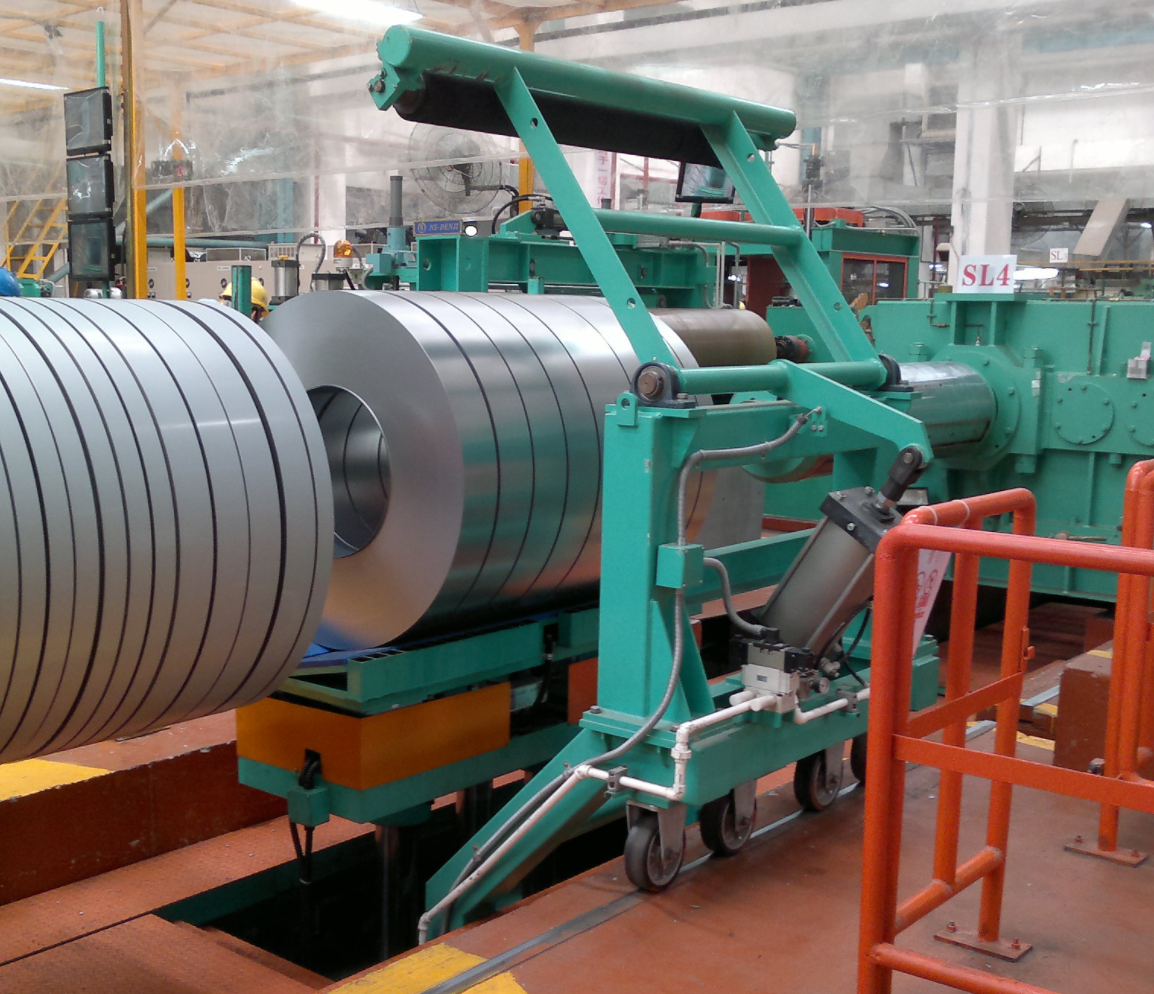
I’ve spent my entire career in the packing machine industry, first as an engineer and now as a factory owner. I’ve helped many clients, from small operations to massive steel mills, navigate these exact challenges. The journey has taught me that the best equipment isn’t always the biggest or fastest. The best equipment is the most adaptable. In a dynamic market like Indonesia’s, adaptability is everything. Let's break down these four essential features. I want to give you the knowledge to ask the right questions and make an investment that secures your factory's future.
How Can Modular Design Adapt to Fluctuating Production Demands?
You see a surge in orders from the construction sector. Your slitting lines are running at full speed, but the packing area is completely overwhelmed. Coils are piling up, your workers are rushing, and shipping deadlines are at risk. This is a common pain point. On the other side, when a major automotive client reduces their forecast, your large, integrated packing line runs at half capacity. It consumes almost the same amount of energy, but produces far less. You feel like you're paying for a highway with only a few cars on it. This inefficiency directly hurts your bottom line.
A modular design allows you to adapt to fluctuating production demands by letting you add, remove, or reconfigure specific packing stations. You can start with a basic setup for your current needs and expand it with more strapping, wrapping, or stacking units as your output grows. This ensures your line is never a bottleneck during busy times and never a wasteful expense during slow periods. It gives you control.
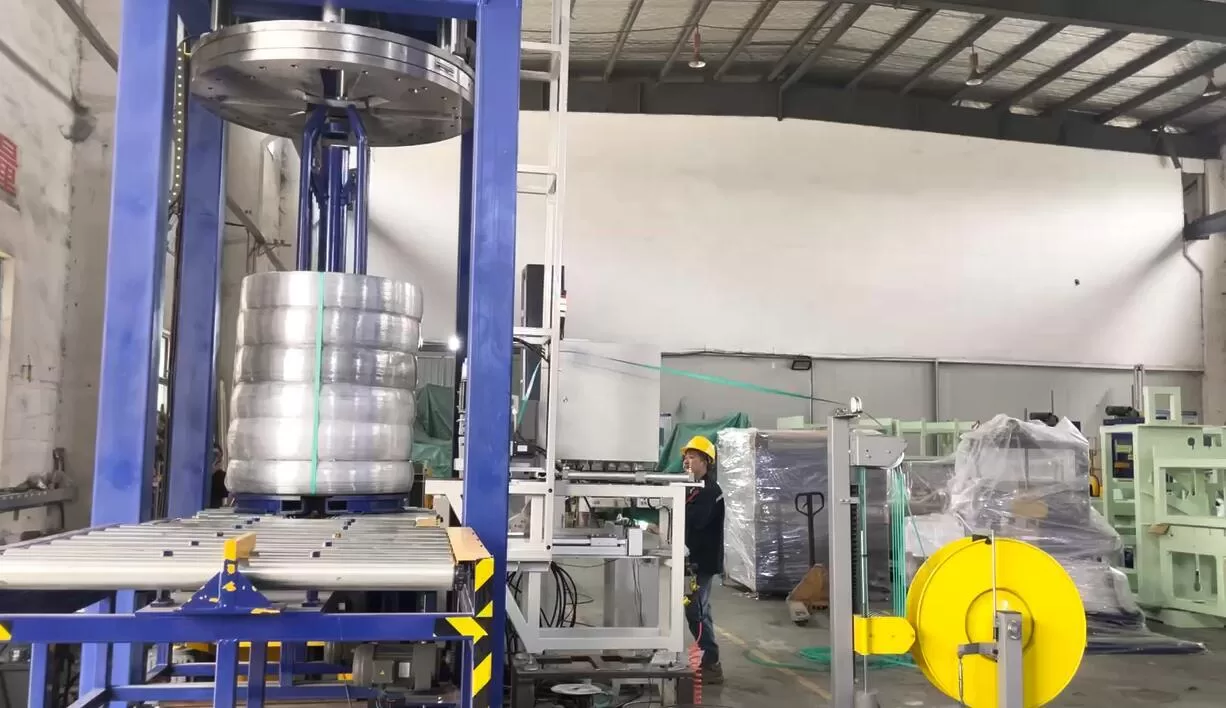
When I first started my own factory, my budget was tight. I couldn't afford a massive, all-in-one line. I had to think smart. This experience taught me the incredible power of a phased approach. A modular line lets you do exactly that. It's about building the system you need, when you need it. It’s a smarter way to invest and a more resilient way to operate, especially in a market with as much potential and volatility as Indonesia.
The "Plug-and-Play" Philosophy
The core idea of modular design is simple: your packing line is built from independent, interconnected blocks. Think of it like building with LEGOs. Each module performs a specific function—a coil up-ender, a wrapping station, a strapping machine, a stacking unit. These modules are designed to work together, but they can be added or rearranged with minimal disruption. If you need to double your strapping capacity, you don't replace the whole line. You simply add another strapping module. This "plug-and-play" approach gives you unparalleled flexibility. The mechanical and electrical interfaces are standardized, which makes installation faster and less complex. This is a huge advantage over traditional, monolithic lines where any change requires extensive engineering, downtime, and cost.
Phased Investment for Financial Prudence
For a steel mill owner, every large capital expenditure is a risk. A modular design turns a single, massive investment into a series of smaller, manageable steps. This is a powerful strategy for managing cash flow and reducing financial exposure. You can align your spending directly with your revenue growth.
| Investment Phase | Production Need | Modular Solution | Financial Benefit |
|---|---|---|---|
| Phase 1: Startup | 50 coils/shift | Basic Line: Coil Car, Strapping Station, Exit Conveyor | Lower initial cost, faster ROI, minimal risk. |
| Phase 2: Growth | 100 coils/shift | Add: Automatic Wrapping Station, Turnstile | Investment timed with increased profits, no overspending. |
| Phase 3: High Volume | 150 coils/shift | Add: Second Strapping Station, Stacking Unit | Maximize throughput without replacing existing assets. |
This phased approach means your equipment is always right-sized for your business. When I work with clients like Javier, who scrutinize every investment for its return, this is the first thing we discuss. It's not about buying cheap; it's about buying smart.
Operational Flexibility in Action
Beyond financial benefits, modularity provides critical operational advantages. Imagine your product mix changes. A new customer requires eye-to-sky stacking, but your current line is only configured for eye-to-wall. With a monolithic line, this is a major headache. With a modular line, you could potentially integrate a new stacking module or reconfigure the layout. This adaptability allows you to say "yes" to more customers and seize new market opportunities quickly. It protects you from being locked into a single process. Your packing line becomes a tool for growth, not a limitation.
What Role Does Automation Play in Reducing Long-Term Operational Costs?
You walk through your plant and see three workers manually strapping a heavy steel coil. It's slow, physically demanding, and the strap tension is slightly different every time. You know this inconsistency can lead to complaints or, worse, safety incidents during transport. Meanwhile, your energy bill arrives, and it's higher than last month. You know that aging, inefficient machines are a big part of the problem. These daily costs add up. The pressure to reduce operational expenses by that target of 8% feels immense, but cutting corners on quality or safety is not an option.
Advanced automation is the most effective strategy for reducing long-term operational costs while simultaneously improving quality and safety. Automated systems perform tasks like strapping, wrapping, and labeling with precision and consistency, 24/7. This reduces labor dependency, minimizes human error, cuts down on material waste, and often uses less energy than older, manual-heavy equipment. It’s an investment that pays for itself through relentless efficiency.
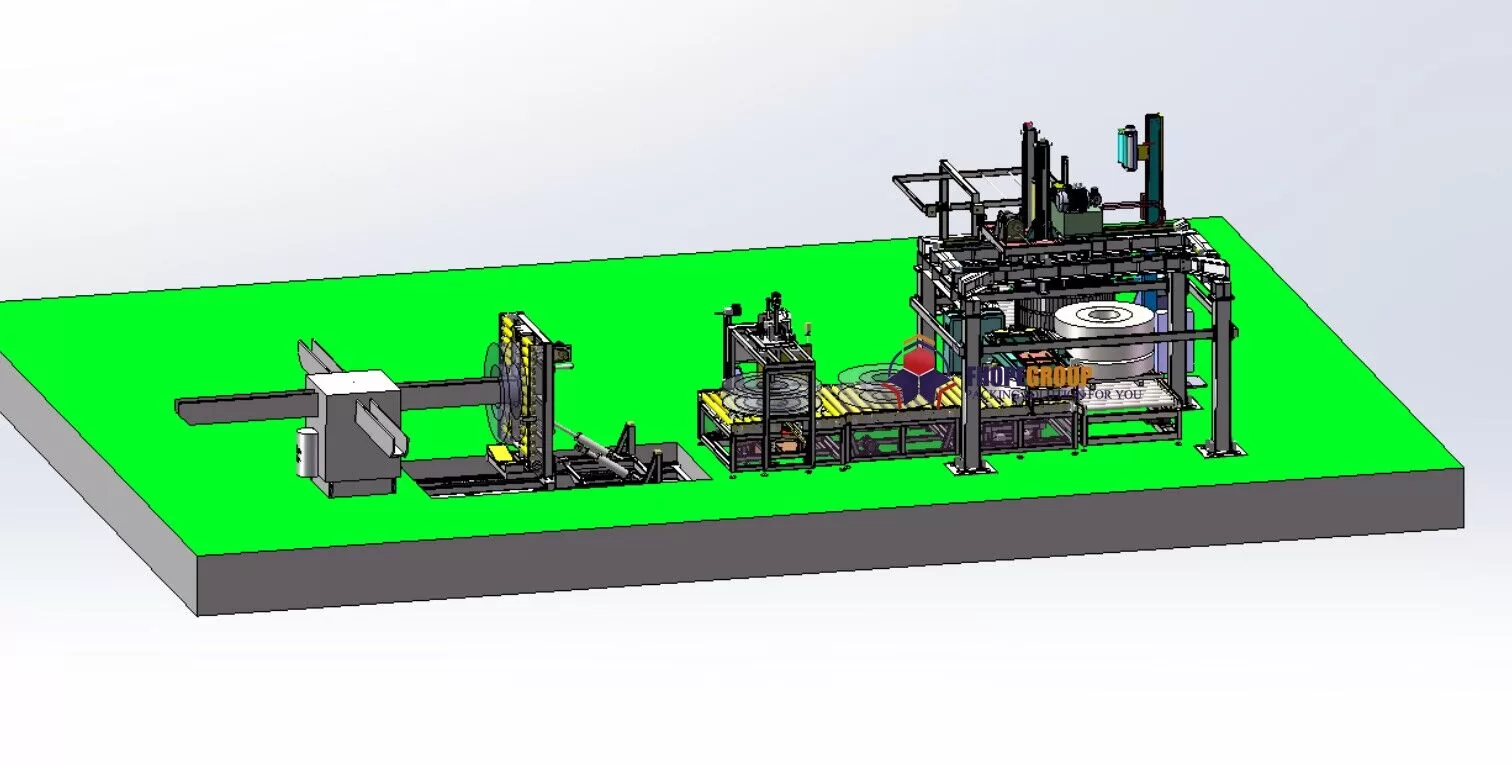
I remember a client in the steel wire business. His main challenge was labor. Finding skilled workers was hard, and turnover was high. His packing area was a bottleneck. We designed an automated line for him that handled everything from coil compacting to strapping and wrapping. A year later, he called me. He said his output had doubled, his packaging quality was perfect, and his best workers were now supervising the system instead of doing the heavy lifting. He was able to grow his business because automation solved his biggest problem. This is the true power of this technology.
Consistency, Quality, and Safety
The first and most obvious benefit of automation is reducing the need for manual labor. But its impact goes much deeper.
- Consistency: An automated strapper applies the exact same tension to every strap on every coil. An automated wrapper uses the precise amount of film needed, no more, no less. This level of consistency is impossible to achieve manually. The result is a secure, professional package every time, which enhances your brand reputation.
- Quality: Human error is a major source of packaging defects. A misplaced label, a loose strap, or a tear in the wrap can lead to rejected shipments and damaged goods. Automation eliminates these variables.
- Safety: Handling heavy steel coils is inherently dangerous. Automation removes workers from the most hazardous tasks, such as feeding strap around a coil or manually lifting heavy materials. This drastically reduces the risk of injuries, leading to a safer workplace and lower insurance premiums.
Key Automation Features for a Slit Coil Line
When we talk about automation, it’s not an all-or-nothing concept. You can automate different parts of the process. Here are the key features that deliver the highest return:
- Automatic Strapping Machines: These can be radial (through the eye) or circumferential (around the outside). Fully automatic systems can position the coil, feed the strap, tension, seal, and cut it without any operator intervention.
- Automatic Wrapping Machines: These "eye-to-sky" or "orbital" wrappers fully encapsulate the coil in stretch film or other protective materials, protecting it from moisture and corrosion.
- Robotic Labeling and Marking: A robot can apply printed labels or use ink-jet systems to mark coils with product information, tracking numbers, and customer logos with perfect accuracy.
- Integrated Conveying Systems: Automated coil cars, turnstiles, and conveyors move the coils smoothly from one station to the next, creating a continuous flow and eliminating forklift traffic jams.
Calculating the ROI of Automation
An owner like Javier needs to see the numbers. The return on investment (ROI) for automation is compelling. While the initial cost is higher than manual equipment, the savings accumulate quickly.
| Cost Factor | Manual/Semi-Auto Line | Fully Automated Line | Annual Savings |
|---|---|---|---|
| Labor | 3 operators x 2 shifts = 6 staff | 1 supervisor x 2 shifts = 2 staff | Cost of 4 operators |
| Material Waste | ~5% (e.g., excess film/strap) | <1% (precise application) | Savings on consumables |
| Rework/Rejects | ~2% due to human error | <0.5% due to consistency | Reduced scrap/return costs |
| Downtime | Higher (breaks, shift changes) | Lower (continuous operation) | Increased throughput/revenue |
When you add up these savings, the payback period for an automated system is often between 2 to 4 years. After that, the efficiency gains translate directly into higher profit margins, helping you reach that goal of an 8% reduction in overall operating costs.
Why is Data Integration a Non-Negotiable for Future Competitiveness?
Your production manager gives you the daily report. It says Line 2 had four hours of downtime. But why? Was it a mechanical failure? Was it waiting for coils from the slitter? Was it a material shortage? The report doesn't say. You have to go ask three different people to piece the story together. You can't fix a problem you can't see clearly. This lack of visibility makes it impossible to achieve ambitious goals like 95% capacity utilization. You're making decisions based on guesswork, not facts.
Data integration is non-negotiable because it turns your packing line from a "dumb" machine into a "smart" asset. By connecting your line to your factory’s central nervous system—your Manufacturing Execution System (MES) or Enterprise Resource Planning (ERP)—you get real-time, actionable information. It tells you not just what is happening, but why. This data allows you to implement predictive maintenance, optimize production flow, and make strategic decisions that boost efficiency and profitability. In today's market, the company that uses data best will win.
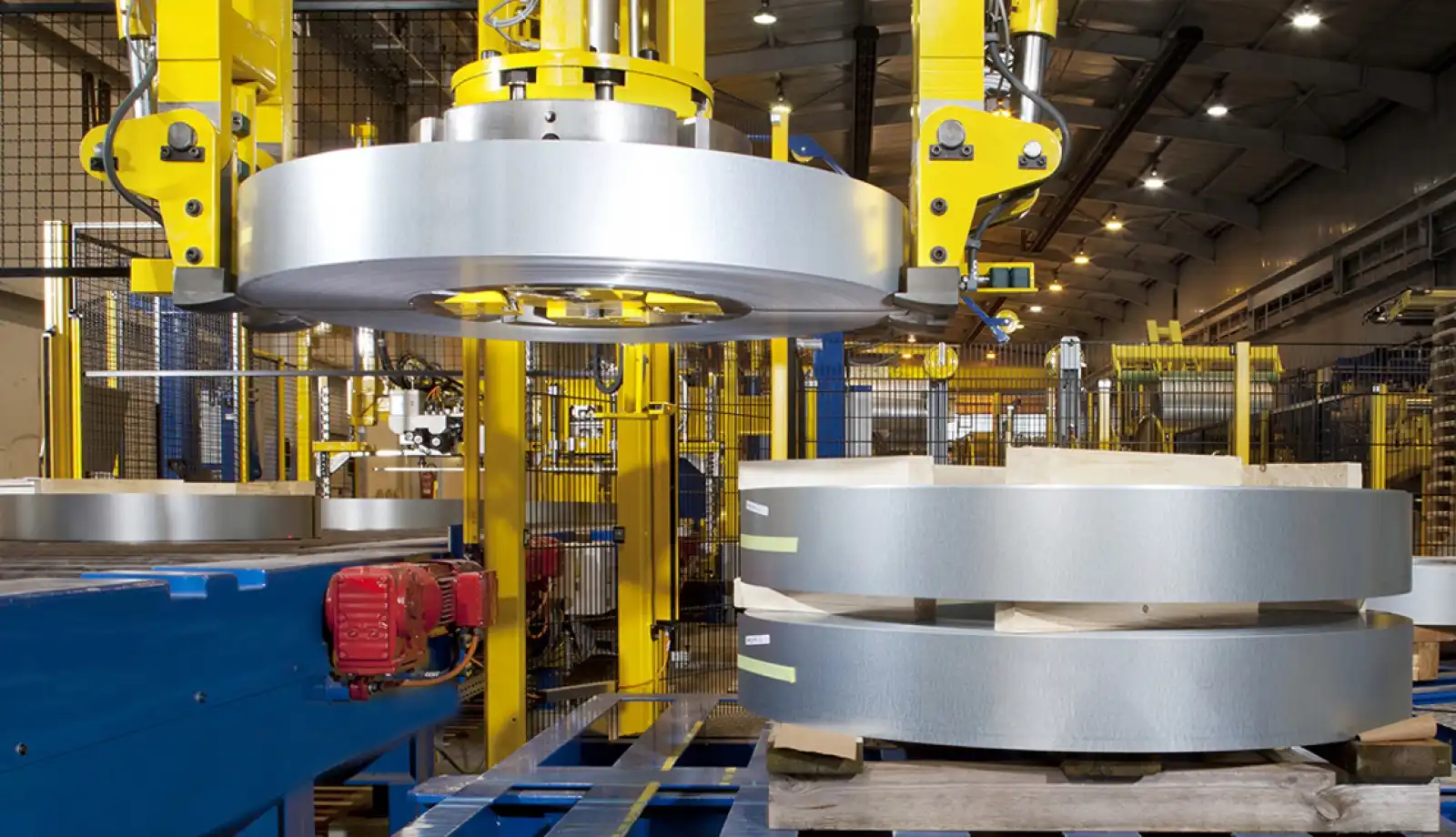
I’ve learned that the most forward-thinking clients don’t just ask about a machine's speed. They ask, "What data can I get from it? How does it connect to my system?" They understand that the physical machine is only half the solution. The other half is the information it provides. For an owner like Javier, who has already invested in a smart scheduling platform, a packing line that can't "talk" to it is a step backward. It creates a blind spot in his otherwise transparent operation. A truly modern line must provide data.
From Dumb Iron to Smart Asset
A traditional packing line operates in isolation. It does its job, but it doesn't share information. A modern, data-integrated line is equipped with sensors, PLCs (Programmable Logic Controllers), and network connectivity.
- Sensors monitor everything: motor temperature, cycle times, strap tension, film consumption, and the presence or absence of a coil.
- The PLC collects this raw data.
- Network connectivity sends this information to a higher-level system (MES/ERP).
This transforms the machine. It's no longer just a piece of iron. It's a source of business intelligence. It provides the visibility needed to manage your operations effectively and achieve goals like a 10% reduction in unit energy consumption by identifying inefficient processes.
Connecting to Your Factory's Brain (MES/ERP)
The true power of data is unlocked when your packing line communicates with your other factory systems. This integration creates a single source of truth for your entire production process.
- From ERP to Packing Line: The ERP system can send a production order directly to the packing line's PLC. The order includes the coil ID, customer specifications, and required packaging recipe (e.g., "3 radial straps, wrap with VCI film, label on top"). This eliminates manual data entry and errors.
- From Packing Line to MES/ERP: Once the coil is packed, the line sends a confirmation back to the system. This message includes the exact time of completion, materials consumed, and any errors that occurred. Your inventory is updated in real-time, your production schedule is automatically adjusted, and your quality control team gets instant alerts.
Turning Data into Actionable Decisions
Data is only useful if you use it to make better decisions. Here’s how the data from your packing line can directly help you achieve your goals:
| Data Point | Insight | Actionable Decision | Goal Supported |
|---|---|---|---|
| Cycle Time per Coil | A specific coil type is taking 20% longer to pack. | Investigate the process for that recipe. Can it be optimized? | Increase Capacity Utilization |
| Downtime Codes | "Waiting for Strap" is the top reason for stops. | Improve the material replenishment process for the strapping machine. | Increase Capacity Utilization to 95% |
| Energy Consumption | The wrapper motor's energy use spikes at high speeds. | Test for the optimal balance of speed vs. energy use. | Lower Unit Energy Consumption by 10% |
| Error Alarms | Frequent "Strap Misfeed" alarms on Strapping Head #2. | Schedule predictive maintenance for that specific head before it fails completely. | Lower Overall Operating Costs by 8% |
This data-driven approach moves you from being reactive (fixing things after they break) to being proactive (preventing problems before they happen). It is the foundation of a truly efficient and future-proof factory.
How Does Versatile Material Handling Prepare You for Market Shifts?
A new potential client approaches you. They are a major player in the appliance industry and need high-quality steel, but their standard coil width is much narrower than what you typically produce. Your slitter can handle it, but your packing line's conveyors and strapper are designed for wider coils. You have to turn down the business. This is a massive missed opportunity. In another scenario, to save on costs, you switch to a new supplier for strapping material, but its thickness is slightly different and causes frequent jams in your machine. Your entire packing area grinds to a halt.
Versatile material handling prepares you for market shifts by ensuring your packing line can physically manage a wide variety of coil dimensions, weights, and packaging materials. This includes having adjustable conveyors, strapping heads that can service different coil widths, and wrappers that can handle various diameters. This built-in flexibility allows you to onboard new customers with unique specifications, test new and more cost-effective consumables, and adapt to changing product mixes without needing a major overhaul of your equipment.
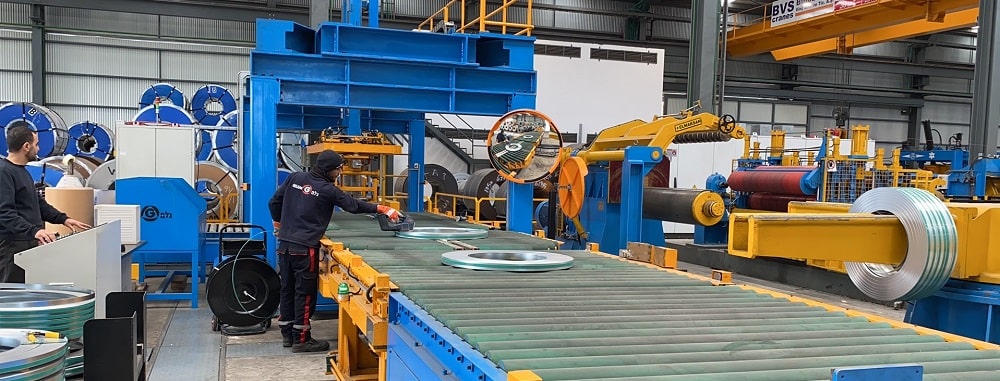
I always tell my clients to think about the products they might be making five years from now, not just the ones they make today. The steel industry is always evolving. New alloys are developed. Customer requirements change. A packing line is a 15-20 year investment. If it can only handle one specific type of coil, you have limited your own future. True future-proofing means building in the ability to handle the unknown. It's about creating a system that gives you the freedom to evolve with your market.
Accommodating a Wide Range of Coils
The physical dimensions of steel coils can vary significantly. A versatile packing line should be designed from the ground up to handle this variability.
- Coil Width: Your conveyors, turnstiles, and strapping machines must be able to handle both your narrowest and widest coils. This often involves adjustable side guides on conveyors and strapping heads that can travel to the correct position.
- Coil Diameter (ID/OD): The wrapping machine's shuttle and the coil car's lifting mechanism must be able to accommodate a range of inner and outer diameters.
- Coil Weight: The entire line, from the entry coil car to the exit conveyor, must be built to safely support the maximum weight of your heaviest coil. The structure, motors, and bearings must all be specified correctly.
Building this flexibility in from the start is far more cost-effective than trying to retrofit it later.
Efficiency and Safety in Handling
Versatile material handling is also about how coils move through the line. A well-designed system minimizes manual intervention and forklift movement, which are major sources of inefficiency and safety risks.
- Coil Cars: Pit-type or floor-mounted coil cars safely lift and transport coils onto the line.
- Turnstiles: These allow you to stage multiple coils, creating a buffer that ensures the packing line is never starved for product.
- Down-enders / Up-enders: These devices can safely tilt a coil from an eye-to-wall to an eye-to-sky orientation, which is often necessary for different strapping or stacking processes.
By automating the movement between stations, you create a smooth, predictable flow. This reduces the risk of coil damage and, more importantly, protects your workers.
Preparing for New Products and Materials
Your R&D department develops a new, high-strength steel grade for the automotive industry. It requires a special anti-corrosion wrap that is thicker than your standard film. Or, your procurement team finds a new brand of PET strap that could save you 15% annually. A rigid packing line might not be able to handle these new materials. The wrapper's tensioning system may not be strong enough, or the strapper's sealer may not work with the new strap. A versatile line, however, is designed with this in mind.
| Feature | Rigid/Inflexible Line | Versatile/Future-Proof Line | Business Impact |
|---|---|---|---|
| Material Handling | Fixed for one coil size | Adjustable for various widths/diameters | Can accept new customer orders. |
| Strapping Head | Works with one strap type/size | Adjustable heat/friction settings for various straps | Can test and use more cost-effective consumables. |
| Wrapping System | Fixed tension, one film type | Variable tension control, can use different films (VCI, paper, stretch) | Can meet specific customer packaging requirements. |
This versatility means you are not held hostage by your equipment. It gives you the operational freedom to innovate, optimize costs, and respond to the market. That is the essence of a future-proof investment.
Conclusion
To thrive in Indonesia's dynamic market, future-proof your slit coil packing line with modularity, automation, data integration, and versatility. This strategic approach ensures your investment delivers lasting value and adaptability.





